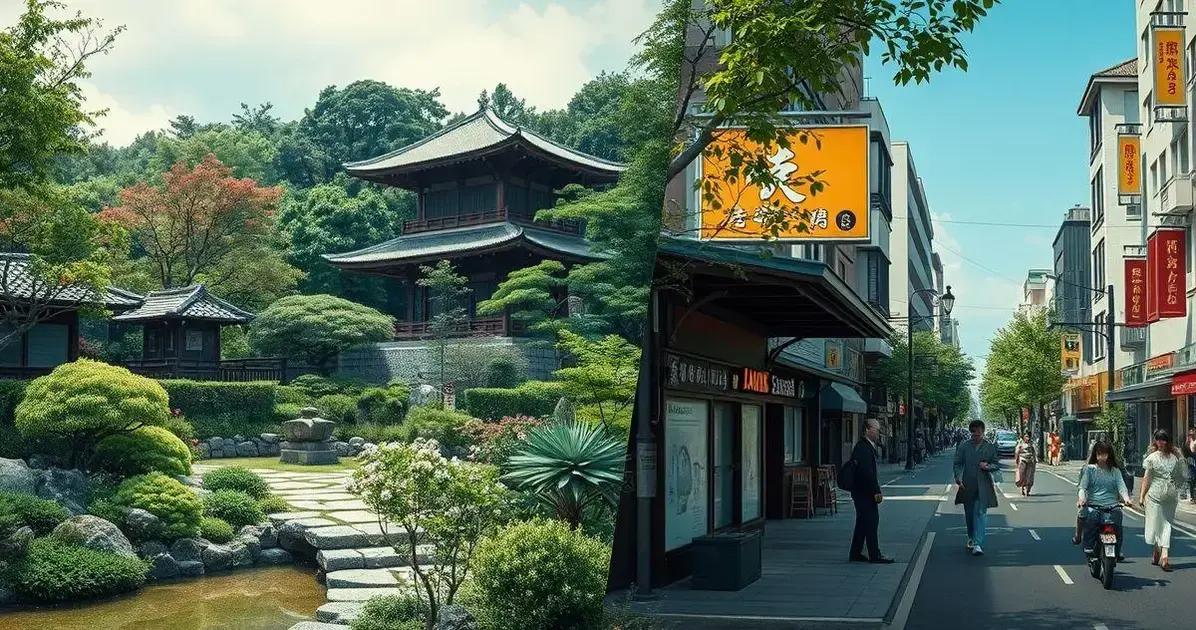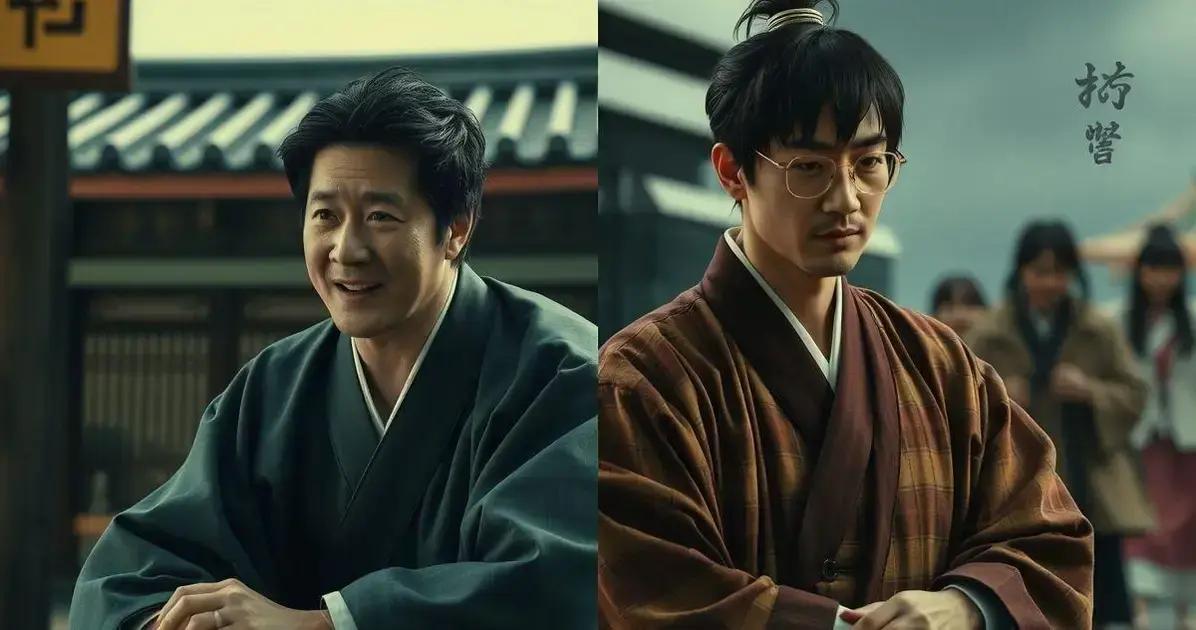Cultural Differences in K-dramas vs. J-dramas: What Sets Them Apart?
Anúncios
K-dramas and J-dramas, though unique, both captivate global audiences with distinct storytelling techniques, exploring themes of romance, family, and societal norms. K-dramas focus on emotional depth and dramatic flair, while J-dramas emphasize subtlety and realism, reflecting cultural nuances that drive their international appeal and success.
**Cultural differences in K-dramas and J-dramas** have captured the fascination of global audiences. These dramas offer a glimpse into the unique traditions and storytelling approaches of Korea and Japan. K-dramas often highlight themes like family loyalty and romance, while J-dramas may focus on existential themes and societal roles. Understanding these cultural nuances not only enriches your viewing experience but also sheds light on the wider impact each genre has on audiences worldwide.
Understanding the Cultural Context in K-dramas
K-dramas offer a unique window into the vibrant culture of Korea, showcasing traditional values and modern trends. Family ties, respect for elders, and the significance of festivals are often integral components within these dramas.
The Role of Hierarchical Relationships
In K-dramas, hierarchical relationships are portrayed with great depth, reflecting the Confucian influence in Korean society. Characters often navigate societal expectations while grappling with personal aspirations.
Traditional Festivities and Their Portrayal
K-dramas incorporate traditional Korean festivals, such as Chuseok and Seollal, providing a backdrop that enriches the narrative. These portrayals offer insight into Korean customs and family rituals.
Modern Day Themes Interwoven with Tradition
Despite their basis in tradition, K-dramas frequently address contemporary issues like the pressure of academic success and the quest for individual autonomy, highlighting the tension between modernity and tradition.
The visual appeal and storytelling of K-dramas captivate audience members, offering a **colorful tapestry of Korean culture** while exploring profound social themes. This fusion is part of the reason for their international appeal.
Exploring Traditional Themes in J-dramas

J-dramas often delve into themes deeply rooted in Japanese culture, providing a compelling narrative enriched by unique storytelling. Honor, duty, and perseverance emerge frequently, reflecting values inherent in Japanese society.
The Influence of Zen Philosophy
Zen philosophy’s emphasis on simplicity and mindfulness is a prevalent theme in J-dramas. Characters often find themselves on a journey of self-discovery and introspection, striving for inner peace amidst life’s challenges.
Family and Societal Expectations
Many J-dramas portray intricate family dynamics, highlighting the conflict between personal desires and societal obligations. This interplay offers insight into the strong sense of duty prevalent in Japan.
Nature and Urban Life Balance
The balance between nature and urban life often serves as a backdrop in J-dramas. Scenes depicting lush landscapes contrast with bustling cityscapes, underscoring the duality of modern Japanese living.
By weaving traditional themes with engaging narratives, J-dramas provide viewers with a deeper understanding of Japanese culture, while addressing universally relatable emotions and experiences.
Comparative Analysis of Storytelling Techniques
The storytelling techniques in K-dramas and J-dramas reveal stark contrasts that captivate different audiences. K-dramas often emphasize emotional depth, creating intense character arcs and dramatic cliffhangers to engage viewers. This approach maintains suspense and viewer investment throughout the series.
Character-Driven vs. Plot-Driven Narratives
While K-dramas excel in developing character-driven stories with emotional twists, J-dramas typically focus on plot-driven narratives. These often revolve around societal issues, providing a slice-of-life perspective that resonates with audiences seeking realism.
Pacing and Episode Length
J-dramas usually favor shorter series, often around 10 episodes, allowing for concise storytelling. In contrast, K-dramas may extend to 16 or more episodes, offering more time for character development and complex subplots.
Visual and Thematic Styles
K-dramas frequently incorporate vibrant visuals and romantic themes that appeal broadly, while J-dramas may employ minimalistic visuals, focusing on the internal struggles and growth of characters. These differences highlight cultural storytelling priorities that define each genre.
K-dramas and J-dramas engage audiences through distinct storytelling methods, reflecting diverse cultural values and viewer expectations. This variety enriches the global landscape of television drama and underscores the unique appeal of each genre.
Impact of Cultural Differences on Global Popularity

The global rise in popularity of K-dramas and J-dramas can be largely attributed to their distinctive cultural elements. K-dramas captivate audiences by blending modern-day love stories with intense emotions, while integrating Korean traditions and contemporary music.
Appeal of Relatable Themes
K-dramas often touch on universal themes like love, ambition, and family, making them relatable to diverse audiences. Their ability to evoke strong emotional responses helps them gain traction across various cultural contexts.
Unique Appeal of Subtle Storytelling
J-dramas, with their more understated narratives, appeal to viewers who appreciate character-driven stories and societal realism. The minimalist approach allows audiences to focus on nuanced performances and intricate storylines.
Impact of Visual and Cultural Innovation
Their visual creativity and fresh cultural perspectives introduce global audiences to new ways of storytelling. The distinct settings and costumes provide a window into Korean and Japanese lifestyles, widening cultural understanding.
Through their innovative approaches, both genres have achieved international success, showcasing the power of cultural storytelling to captivate audiences and transcend cultural boundaries. The growing interest in Asian dramas highlights the impact cultural differences can have on global popularity.
Concluding Thoughts on K-dramas and J-dramas
The exploration of cultural differences in K-dramas and J-dramas highlights the unique storytelling methods that captivate global audiences. While K-dramas excel in emotional depth and compelling romantic narratives, J-dramas offer an introspective look at life through subtle storytelling and societal themes.
The distinct cultural elements portrayed in these dramas enhance their appeal, drawing viewers into the intricate worlds of Korean and Japanese societies. Whether through vibrant, detailed scenes or minimalist, character-driven narratives, both genres showcase the power and breadth of Asian storytelling.
The growing international popularity of these dramas underscores the impact of cultural diversity in entertainment. As more audiences discover K-dramas and J-dramas, the appreciation for these rich cultural tapestries continues to expand.
The ongoing success of these dramas serves as a testament to the strength of cultural narratives in shaping global media landscapes. Embrace the world of K-dramas and J-dramas to experience the depth and excitement of Asian storytelling firsthand.
FAQ – Frequently Asked Questions About K-dramas and J-dramas
What are the key differences between K-dramas and J-dramas?
K-dramas often focus on emotional depth and romance, while J-dramas emphasize subtle storytelling with cultural themes and societal issues.
Why are K-dramas so popular globally?
K-dramas offer relatable themes, such as love and family, vivid storytelling, and emotional engagement that resonate with international audiences.
How do J-dramas portray traditional themes?
J-dramas explore themes like honor, duty, and Zen philosophy, often focusing on internal struggles and narrative realism reflecting Japanese culture.
What storytelling techniques do K-dramas use?
K-dramas employ character-driven narratives with dramatic turns, vibrant visuals, and extended storylines to engage viewers emotionally.
Can cultural differences influence the global success of dramas?
Yes, cultural diversity enriches storytelling, allowing viewers to experience unique perspectives and narratives, boosting international popularity.







